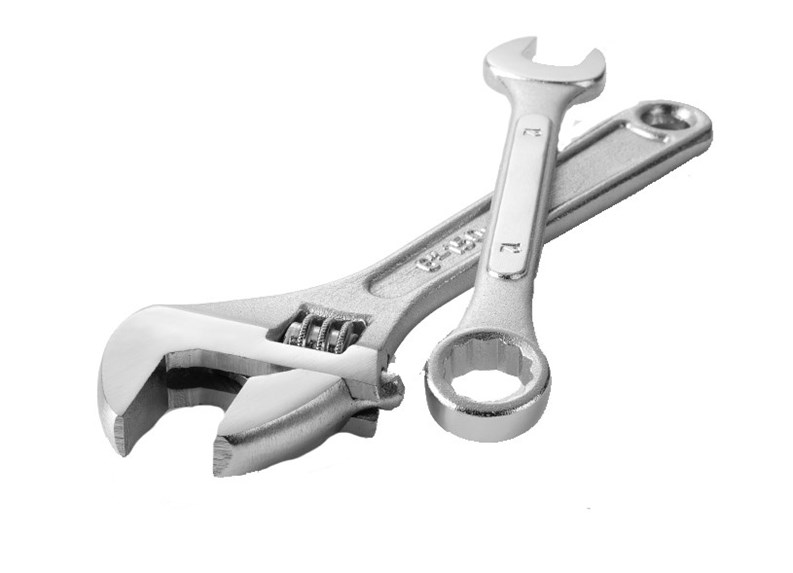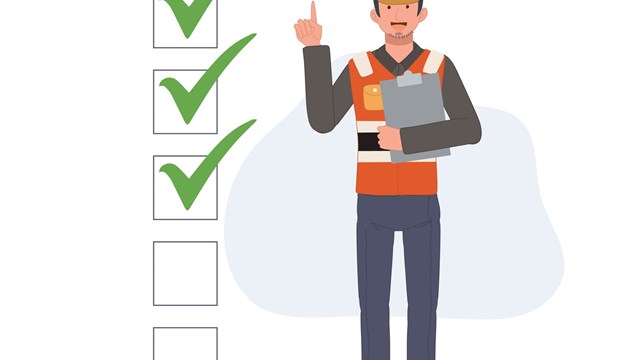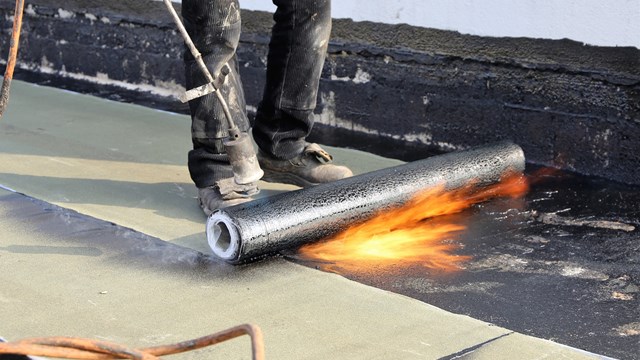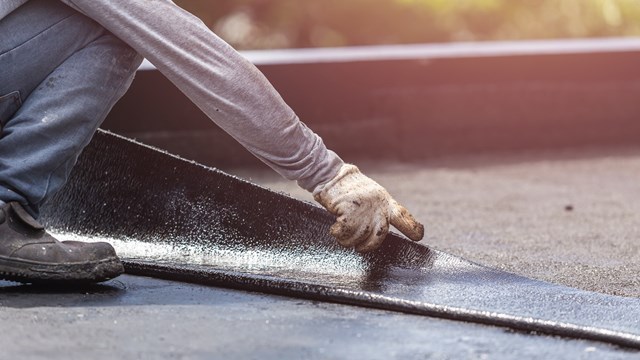In a city known for its tall buildings, two kinds of structures loom almost as large as the buildings themselves—construction sheds (normally called a sidewalk shed) and scaffolds. Everyone has seen these familiar blue plywood platforms boosted up above the city’s sidewalks by crisscrossing frameworks of metal poles and girders. But what’s their purpose—and how does the city manage their safe construction and deconstruction? The answers are useful, both to boards and managing agents.
Shed Facts
“A sidewalk shed is set up for sidewalk protection, period,” says Tony Malatos of KNS Restoration in Maspeth, Queens. “You set them up when you do work on the side of a building, to catch any debris. It protects pedestrians.”
A scaffold is a work platform, either suspended from the roof or some other part of a building or built up from the ground, typically with a system of pipe sections. This type of scaffold is usually erected on top of a sidewalk shed, which protects the sidewalk below the scaffold. The sheds are nothing more than tubular sections with mudsills at the base and corrugated 1x4 or 1x8-foot flanking above.
“Scaffolding is what you use to actually get up there and do the work,” Malatos explains. “There’s suspended scaffolding and there is pipe scaffolding.”
“People like to call scaffolds ‘bridges,’” says Wayne Bellet of Bellet Construction in Manhattan. “They say, ‘I’m going to set up a sidewalk bridge,’ but ‘bridge’ and ‘scaffold’ are both accepted words in the industry. The sidewalk pedestrian shed is really the most important part, though—it’s there solely for the safety of pedestrians.”
Sidewalk sheds are regulated by the Department of Buildings (DOB), which mandates how tall they can be, what type of lighting is necessary, what materials they can be made of, how to space them, and just about everything you can think of. There is nothing left up for discretion.
“We’re working in New York City, where there’s a dense population, and we’re tearing buildings apart all the time. Things can fall—anything from tools to pieces of masonry—so you need good protection to prevent accidents,” says Jerry Yates of Yates Restoration in Long Island City. “If you look at our sidewalk bridges, they must be up to code, designed by a licensed engineer, approved by the DOB and you must get a permit—unlike other places in the world. In New York, sheds have a real purpose—they stop something falling 20 stories from hurting people.”
“All that matters is that the overhead plane—the one that goes horizontal as you go underneath it—can withstand 100 pounds of pressure,” says Bellet. “You can drop 100 pounds of feathers or bricks—they just don’t want it penetrating that plane. It’s a very efficient regulation.”
Some contractors own their own sidewalk sheds, but they can also be rented from what are known in the industry as sidewalk shed erectors. Contractors hire them on a scale and the erectors set up the scaffold and shed prior to the job’s commencement, then disassemble it when the job is done.
“Years ago, some of these sheds stayed up for years after the associated project was finished,” says Bellet. “People would just set them up [and leave them]. Now, the city of New York sets every sidewalk shed permit to expire on December 31. You have to sit in front of the examiner again and explain why you need to renew it.” Bellet says that about 25 to 35 percent of those permits aren’t given extensions and so must come down.
Scaffold Facts
The most commonly used scaffolds in Manhattan are swing scaffolds, which are hung down the sides of buildings for workers doing brickwork and similar jobs.
“A suspended scaffold has to be rigged,” says Malatos. “You need to be a licensed rigger. Professional riggers usually use sea hooks to support scaffolding on the parapet. It all has to be approved [by the DOB].”
“We’re basically a construction regulator,” said Jennifer Givner, a spokesperson for the DOB. “In order to put up a sidewalk shed or scaffolding, you need to come to department and obtain a work permit to do so.”
According to the DOB, all hanging scaffolds must be in compliance with the Building Code of the City of New York. Only a licensed master- or special-rigger or expeditor may apply for a hanging scaffold permit. The applicant—or a designated supervisor listed on the application—must be present on the hanging scaffold during working hours. The designee must have the tear-off from the rigger’s license and a Designated Rigging Foreman License on-hand during work. All workers on a hanging scaffold must have a Certificate of Fitness in order to work, and must be employed by the company listed on the application form. A copy of the approved drawings must be on-site during operation of a rig or hoist.
When it comes to sidewalk sheds, Givner says that the standard permit process applies. “You come to the department, a licensed architect or engineer files the plans showing how the shed will be set up, the plans get approved and you can pull a permit,” Givner says. “They are typically good for about a year.”
The department also has the authority to require that a sidewalk shed be erected around any type of building that has a facade problem.
“Generally, if you’re removing more than a few square feet of brickwork, or doing any kind of demolition work where something might fall, you need a shed,” says Yates. “For less invasive work like caulking or inspections, you don’t necessarily need one—but the fact is that even if you’re just caulking, you’re in the middle of Manhattan and you drop a gun, you can hit someone regardless of the code. You have to use common sense.”
It’s the Law
After a series of injuries and more than one death caused by falling building debris, Local Law 10 was enacted in 1980 by Mayor Ed Koch and mandated that all exterior facades facing the street be inspected for soundness and safety every five years.
“Portions of building facades were falling down and killing people,” says Bellet. “The city later revised Local Law 10 as Local Law 11—which stated that not only the front facade but all facades on any structure 80 feet high or taller needed to be inspected.”
Insuring Safety
As with any aspect of an exterior construction project, it’s very important that sidewalk sheds and scaffolds are fully and properly insured. According to Malatos, most buildings in the city require their contractors to have an umbrella policy of $5 million to $10 million.
“You just have to be insured,” he says. “Boards and managers should not assume anything and demand an original general liability policy. That’s actually a contractor’s largest expense when it comes to running his or her business. It used to be labor, but now it’s clearly insurance.”
The DOB also runs insurance checks before issuing a permit.
“Part of the permit process is us checking for a number of different insurance requirements,” says Givner. “Worker’s compensation, disability—it’s the responsibility of the contractor to show proof of that insurance.”
Permits and policies aside however, the sidewalk shed itself is a form of insurance against mishaps, injuries, and worse.
“The shed is the cheapest form of insurance that you can possibly buy,” Bellet said. “If you don’t have it, someone could get hurt—and all you had to do to prevent that was put up a $30,000 shed. If you don’t have one and you did have a fragment come off the work area, you could cause a fatality. I have some customers who won’t pay for a shed, and I’ll either pass on the job, or put the shed up myself.”
Signs of the Times
Once a sidewalk shed is erected, it’s only a matter of time before it’s plastered with posters advertising everything from nightclubs to new movies. Putting posters up on sheds actually violates the city’s “Post No Bills” policy, but the policy isn’t strictly enforced.
“I put a decal on my sheds that says ‘post no bills’ because I don’t want a tattered board that has everyone’s advertising on it,” says Bellet. “It doesn’t reflect well on me or my client. If it’s a hot neighborhood though, they go right over it. There’s really no recourse. If the shed is up high enough, it’s harder to get to, so I push for people to put up higher-than-normal sidewalk sheds. It looks better, has better light underneath it, and the advertisers are unable to put posters on it.”
Often, sidewalk sheds set up in front of first-floor businesses obscure the business’s own signage. While it’s not technically legal to plaster advertising all over sidewalk sheds, city ordinance RCNY 27.03 allows businesses whose signs are covered by the shed to install a temporary sign on the shed letting customers know where they are.
In the past decade, buildings have tried to lease out advertising space on their sidewalk sheds. These advertisements are seen by thousands and can be just as effective as a giant billboard. Nike has been known to pay up to $30,000 for such a contract.
“It’s the building that makes money,” says Malatos. “Several scaffolding companies even have shares in advertising companies now. That’s something that is happening.”
The next time you’re walking in Manhattan and you walk under a sidewalk shed, take a good look at it and remember that despite all the graffiti and semi-illegal posters and signs, it’s there for your protection.
Keith Loria is a freelance writer and a frequent contributor to The Cooperator.







4 Comments
Leave a Comment